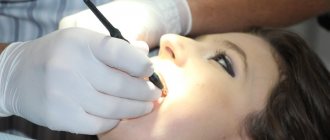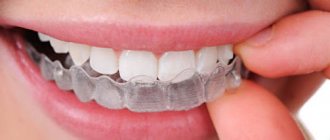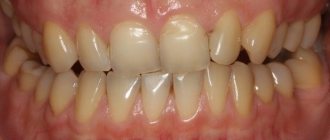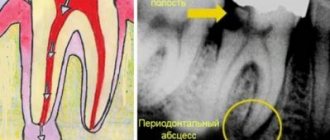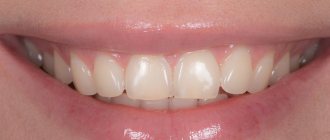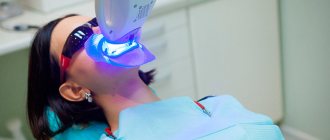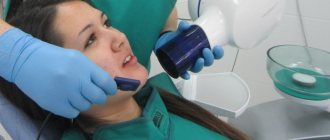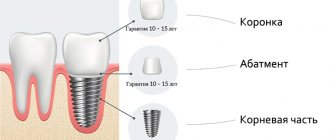ELECTROPHORESIS FOR THE TREATMENT OF CHILDREN
Medicinal electrophoresis is a method of electrotherapy, the therapeutic effect of which on the child’s body is due to the combined effect of a low-power direct electric current and a medicinal substance introduced into the skin with its help.
Electrophoresis is sometimes called “injections without a syringe.” The effect of the drug substance significantly prevails over the effect of electric current. When using the term “electrophoresis” it is combined with the name of the administered drug substance, for example: calcium electrophoresis, penicillin electrophoresis. In foreign terminology and in cosmetology, the term iontophoresis is used, which more accurately reflects the essence of this physiotherapeutic method. Medicinal electrophoresis is widely used in pediatrics, as it allows one to avoid injections that frighten children, and allows one to reduce the concentrations and doses of drugs, reducing their side effects and preventing allergic reactions. The targeting of medicinal effects and the creation of long-term medicinal depots are used in cosmetology, dermatology and dentistry.
Contraindications to ion therapy
Electrophoresis has contraindications. Before you begin the procedures, you need to familiarize yourself with them. These include:
- pustular infections on the skin;
- malignant neoplasms;
- kidney disease;
- bronchial asthma;
- inflammatory processes in the acute stage;
- allergy to the drug that must be administered during electrophoresis;
- blood clotting disorder;
- intolerance of the body to electric current;
- heart or kidney failure, etc.
WHAT IS THE MECHANISM OF ACTION OF ELECTROPHORESIS?
The administration of medicinal substances is based on the properties of equally charged particles to repel, and oppositely charged particles to attract. During electrophoresis, a drug is placed under the active electrode, the active ions of which have the same charge as the electrode: negatively charged substances are placed under the cathode with a negative charge, and positively charged substances are placed under the anode with a positive charge. Ions of all metals and most alkaloids are introduced from the positive electrode, and acid radicals and metalloids are introduced from the cathode with a negative charge. For introduced protein substances, the acid indicator is important: with an acidic reaction it is introduced from the anode, with an alkaline reaction - from the cathode, since under the influence of an electric current under the anode the water used to dissolve the substances is acidified, and under the cathode - alkalization occurs. The alkalization effect during electrophoresis is actively used in cosmetology to soften the stratum corneum of the skin.
The electrode used is called active. To avoid unpleasant sensations such as tingling or burning, the area of the negative electrode (cathode) should be at least twice the size of the anode. If necessary, two electrodes are used simultaneously to administer drugs with different charges. Exposure to direct electric current increases the permeability of the skin to charged drug particles. The injected ions enter the skin to a depth of 1 mm, mainly through pores, sweat glands and hair follicles. Further migration of the substance into deeper tissues is achieved through diffusion. Medicinal substances are retained in the skin for up to 3 weeks, reducing the need for large doses of active substances. For local effects, 5–10% solutions of substances are used, and for segmental reflex effects, 1–2% solutions are used. The use of a higher concentration of the substance does not improve the effectiveness of therapy and does not increase the amount of drug delivered to the tissue. All solutions of medicinal substances are prepared using distilled water to avoid the formation of unwanted active ions. The current is usually limited to 5 mA.
An important advantage of administering drugs using electrophoresis is the activation of active substances due to dissociation into active ions. Medicinal electrophoresis allows you to create a high concentration of the active substance directly in the areas of interest. At the same time, due to the targeted action and low concentrations, the overall effect of the drug is reduced, which makes it possible to prevent many side effects, including common allergic reactions. The amount of ions introduced into the body is determined by the strength of the current, the area of the active electrode and the duration of the procedure. In children, depending on age, it can reach 20 minutes. In pediatrics, it is always preferable to increase the procedure time instead of increasing the current intensity to avoid discomfort in children. In any case, local hyperemia (redness) of the skin will be noted under the electrodes - due to local expansion of microvessels from irritation by acidic and alkaline electrolysis products.
Iontophoresis
There is a more modern modification of electrophoresis - iontophoresis, in which special long-term wearing patches are used to administer the drug, connected to a very weak direct current source (battery). During iontophoresis treatment, the patch is worn for a certain period of time, depending on the medication being taken. Some patches can be worn for up to 24 hours. The child will not feel pain from the treatment. Only a slight tingling sensation is possible while wearing the patches.
INDICATIONS FOR DRUG ELECTROPHORESIS
There are many indications for the use of medicinal electrophoresis. In particular, electrophoresis is carried out for the following therapeutic purposes:
- Anti-inflammatory and antibacterial therapy.
- Reduced pain.
- Reducing muscle spasms.
- Reducing swelling and lymphostasis.
- Control of calcification formation.
- Control of scar tissue formation.
Electrophoresis is used for the following diseases:
- Nervous diseases: neuritis, neuralgia, migraines.
- Cardiovascular diseases: coronary heart disease, hypertension stages I, II.
- Pulmonary diseases: chronic and acute bronchitis, bronchial asthma, pneumonia.
- ENT diseases: tonsillitis, sinusitis, otitis, pharyngitis.
- Gynecological diseases: colpitis, cervicitis.
- Urological diseases: prostatitis, cystitis, pyelonephritis.
- Diseases of the digestive system: stomach and duodenal ulcers, colitis, gastritis, cholecystitis.
- Surgical diseases: treatment of scars, long-healing wounds.
- Dermatology: acne scars, seborrhea, rosacea.
Use for diseases of the respiratory system
Electrophoresis is especially effective for pathologies of the respiratory system. This is due to its therapeutic effect, which is expressed in:
- acceleration of lymph flow;
- expansion of the bronchi when they narrow;
- improving blood circulation;
- activation of metabolic processes;
- relieving pain;
- increasing the activity of the immune system, in particular leukocytes;
- calming effect on the nervous system;
- decreased muscle tone;
- synthesis of biologically active substances;
- an increase in oxygen and the amount of ATP in tissues;
- activation of the reticuloendothelial system;
- inhibition of the inflammatory process;
- reducing the permeability of vascular walls;
- relieving swelling;
- improving regenerative functions;
- stimulation of antibody synthesis.
The use of electrophoresis in conjunction with calcium chloride enhances the existing effects and adds additional effects of the drug. These include:
- stopping bleeding;
- reduction of allergic reactions;
- relieving inflammation;
- replenishment of calcium deficiency.
These properties provide a powerful effect against cough and runny nose in infants, and also help to avoid the consequences and complications of diseases. Medicinal electrophoresis is used for many pathologies of the respiratory system. These include:
- bronchitis with chronic or acute course;
- pneumonia;
- bronchial asthma;
- vasomotor rhinitis;
- pleurisy;
- bronchiectasis;
- tracheitis.
Instead of calcium, phosphorus can be used, which has similar properties and indications. But it is more difficult to decompose into ions, so this technique is not so popular.
HOW IS THE PROCEDURE OF DRUG ELECTROPHORESIS PERFORMED?
The procedure is carried out in a medical institution in a specially adapted room. The affected area should be washed thoroughly with soap and water. There should be no damage or new growths on it. Electrodes with electrode pads soaked in distilled water and a medicinal solution are placed on the surface of the skin. Dry electrodes must not be used. Electrodes with pads must fit tightly to the skin, otherwise uneven distribution of current can lead to skin irritation. An electrode with medicine is applied to the area of the body that requires therapeutic action. An electrode without medication is placed nearby. Before the procedure, the child is explained that he must immediately inform the doctor of any unpleasant sensations. A slight tingling or tingling sensation is considered normal during the electrophoresis procedure. Then turn on the device and slowly increase the current. A typical electrophoresis procedure takes 10 to 20 minutes, depending on the amount of medication injected into the body and the age of the child. After the procedure, the physiotherapist turns off the device and removes the electrodes. Redness of the skin under the electrodes is considered a normal reaction to the procedure.
Electrophoresis with calcium in the rehabilitation center of the Yusupov Hospital
At the Yusupov Hospital, which is located near the center of Moscow, you can undergo physiotherapy with various drugs, including calcium for electrophoresis. The price for the procedure at the Yusupov Hospital is quite moderate and will depend on the type of disease, the number of procedures, and the need to perform additional manipulations. On average, electrophoresis requires 10 sessions of 15-20 minutes each. If necessary, the procedure can be repeated after a certain period of time.
At the Yusupov Hospital, electrophoresis with calcium is performed as prescribed by a doctor. An experienced specialist assesses the need for this procedure and excludes contraindications to ensure maximum patient safety and obtain the best treatment results. Electrophoresis is performed in a rehabilitation center, which is equipped with the latest technology. We use modern equipment to achieve the best therapeutic effect. Electrophoresis is carried out by qualified rehabilitation therapists and physiotherapists, so in the Yusupov Hospital the patient receives the highest quality treatment for pathology.
You can make an appointment with rehabilitation therapists, physiotherapists and other rehabilitation clinic specialists, get information about the work of the rehabilitation center, and clarify other questions of interest by calling the Yusupov Hospital.
CHILD'S REGIME AFTER THE PROCEDURE
After the procedures, it is necessary to allow the child to rest for 20–30 minutes in the rest room. If you have to go outside in cold weather, then the rest should be longer. After electrophoresis, it is not recommended to warm the area of exposure so as not to change the concentration of the drug deposited in the skin. If the skin becomes dry after the procedure (this is possible due to exposure to acidic or alkaline electrolysis products and changes in the reactivity of the sebaceous and sweat glands), it can be treated with a moisturizing lotion a few hours after the procedure.


